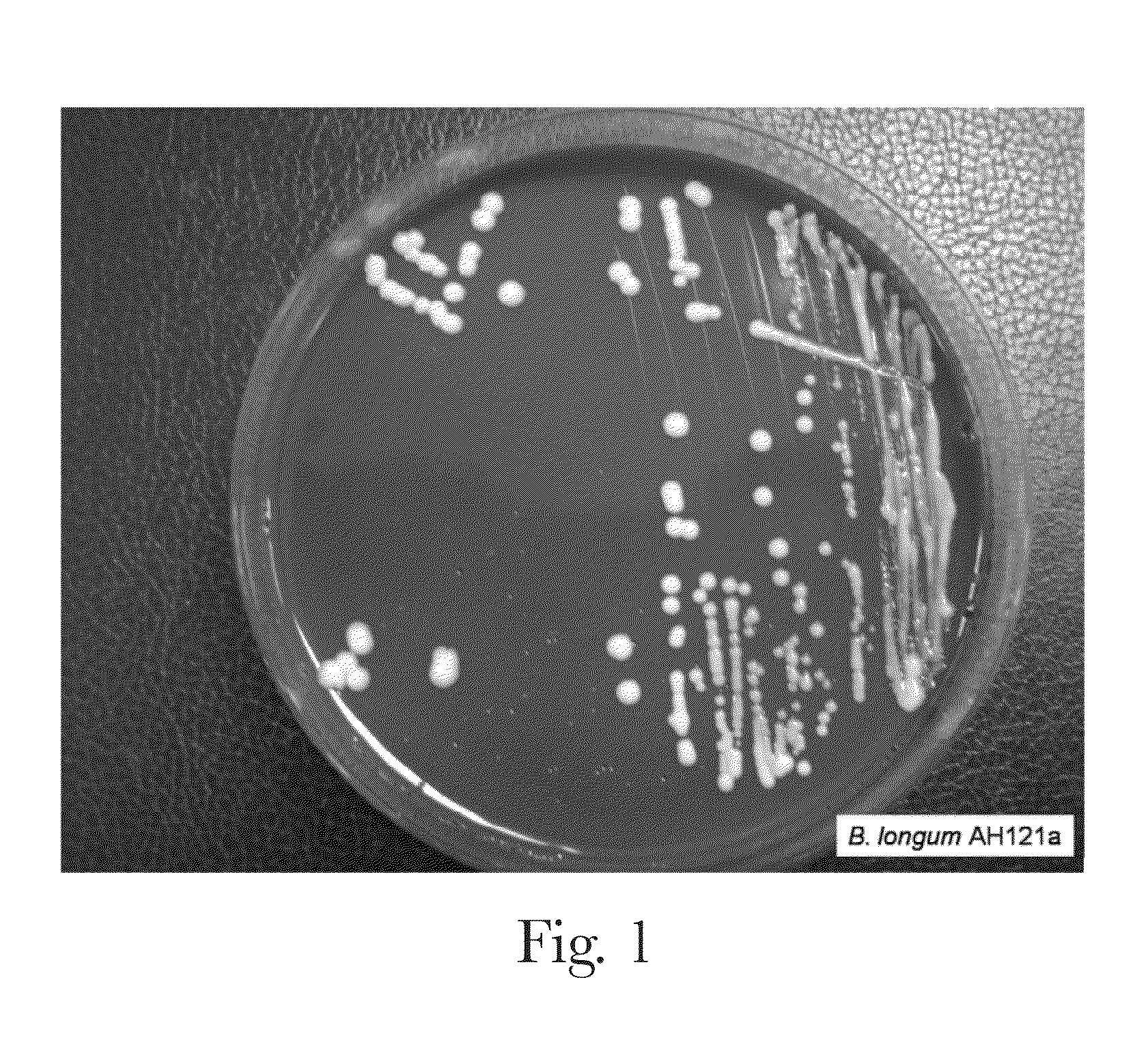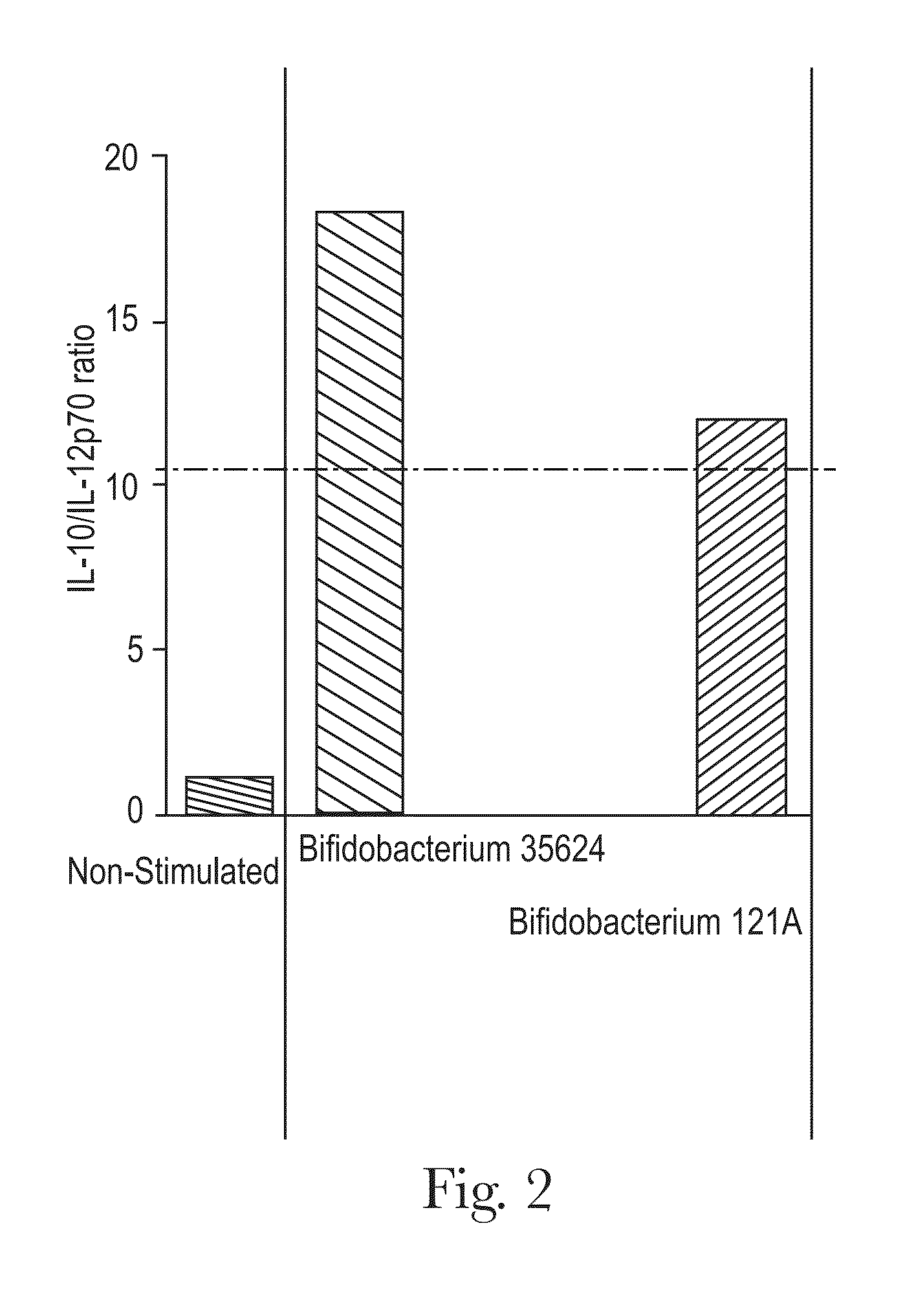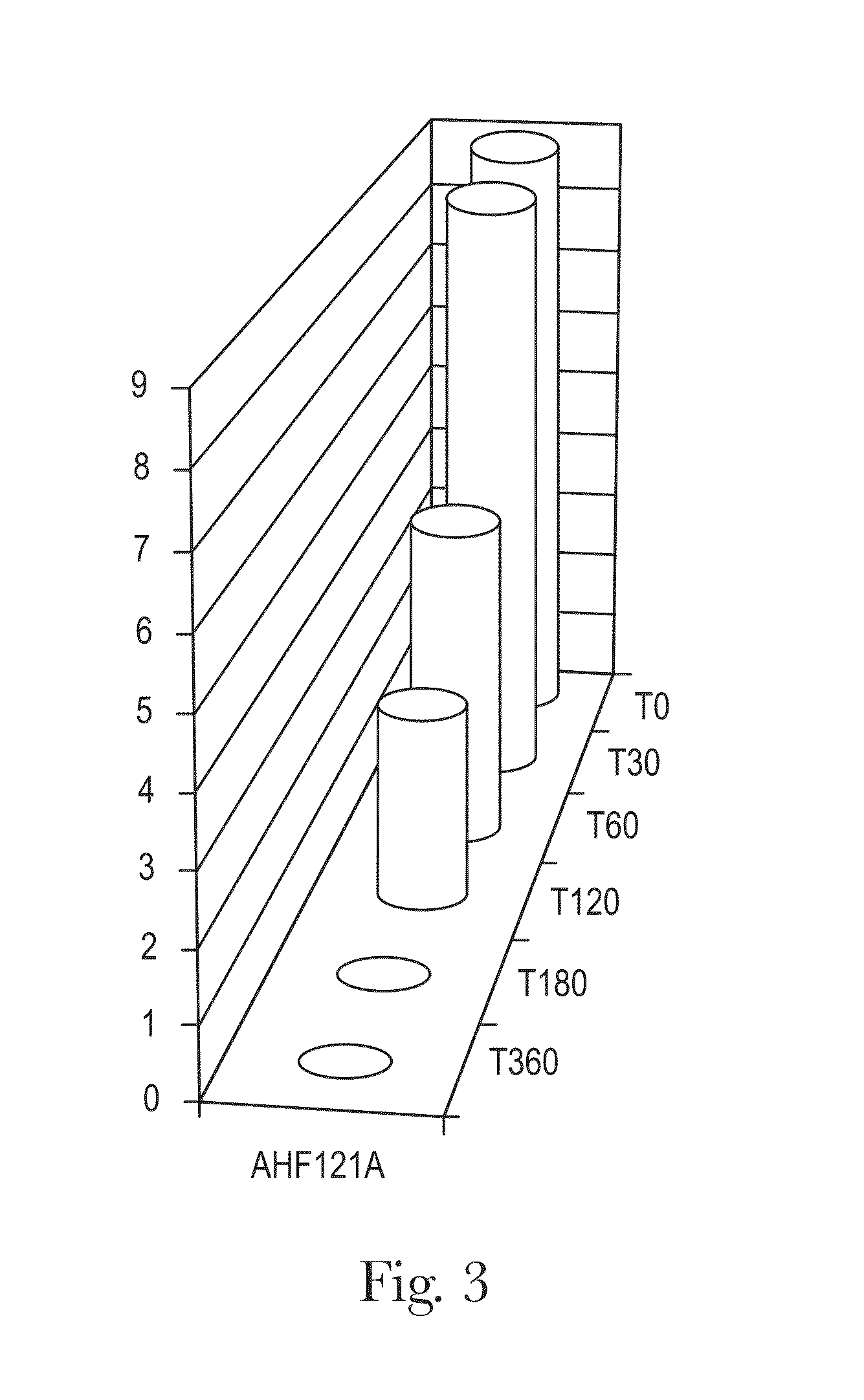Bifidobacterium strain
a technology of bifidobacterium and bacterium, which is applied in the field of bifidobacterium strain, can solve the problems of part of the natural intestinal microflora, and achieve the effects of less storage requirements, easy incorporation of pharmaceuticals, and simple product preparation
- Summary
- Abstract
- Description
- Claims
- Application Information
AI Technical Summary
Benefits of technology
Problems solved by technology
Method used
Image
Examples
example 1
Isolation of Bifidobacterium longum AH121A
[0092]Bifidobacterium longum strain AH121a was isolated from feline bowel tissue.
[0093]Feline intestinal samples were obtained from healthy cats presenting at the local veterinarians for owner initiated and approved euthanasia. All animals were healthy and disease-free. The colon, mid-colon, caecum and ileum of each cat were dissected in order to expose the mucosa.
[0094]Supernatants were removed following agitation of the mucosal tissue (vortexed for 1 minute) and following mechanical homogenisation of the tissue. Each supernatant was plated on de Mann Rogosa Sharpe (MRS) agar. These were incubated anaerobically, using the Anerocult GasPak system, for 48 hours at 37° C. Isolated colonies from the plates were re-streaked onto either MRS and again grown anaerobically under the same conditions. Isolated colonies were re-streaked a further 4 times in order to purify a single strain. Colony morphology and microscopic appearance were assessed. Sui...
example 2
[0096]A Congo red agar screen was used to phenotypically screen for EPS expressing bacterial strains. Briefly, 10 ml Modified Rogosa broth media (+0.05% cysteine) was inoculated aseptically with a freshly grown colony of the bacterial strain and incubated anaerobically at 37° C. until turbid (about 16 to about 24 hours). The broth cultures were aseptically streaked onto Congo Red Agar plates and incubated anaerobically at 37° C. for 48 hours. It is believed that EPS produced as a by-product of the growth and / or metabolism of certain strains prevents the uptake of the Congo red stain resulting in a cream / white colony morphology. Strains that produce less EPS take up the Congo red stain easily, resulting in a pink / red colony morphology. Strains that do not produce an EPS stain red and look almost transparent in the red agar background.
[0097]Referring to FIG. 1 the colony morphology for B. logum AH121A is convex, mucoid, bright white colonies.
example 3
[0098]To determine the resistance of feline bacterial isolate AHF121A to various concentrations of porcine bile and to assess the survival of feline bacterial isolate AHF121A at pH 2.5 for 6 hours and subsequent bile resistance using various concentrations of bile.
Experimental Design:
[0099]The test strain was AHF121A Bifidobacterium longum. Resistance to bile is examined using MRS / RCA agar plates supplemented with porcine bile (0.3, 0.5, 1.0, 2.0, 5.0, 7.5 and 10%). The survival of the strains at pH 2.5 is monitored at intervals of −5, 5, 30, 60, 120, 180 and 360 min using the plate count method. The bile resistance is examined after challenging the strains at pH 2.5 for 6 h.
Method:
[0100]The procedure for the determination of feline bile resistance is outlined below.
[0101]An assessment of the survival rate of freeze dried bacteria in the presence of various concentrations of feline bile, ranging from 0.3% to 10%, was carried out.
[0102]Synthetic feline bile plates of various concentr...
PUM
| Property | Measurement | Unit |
|---|---|---|
| pH | aaaaa | aaaaa |
| concentrations | aaaaa | aaaaa |
| pH | aaaaa | aaaaa |
Abstract
Description
Claims
Application Information
 Login to View More
Login to View More - R&D
- Intellectual Property
- Life Sciences
- Materials
- Tech Scout
- Unparalleled Data Quality
- Higher Quality Content
- 60% Fewer Hallucinations
Browse by: Latest US Patents, China's latest patents, Technical Efficacy Thesaurus, Application Domain, Technology Topic, Popular Technical Reports.
© 2025 PatSnap. All rights reserved.Legal|Privacy policy|Modern Slavery Act Transparency Statement|Sitemap|About US| Contact US: help@patsnap.com



